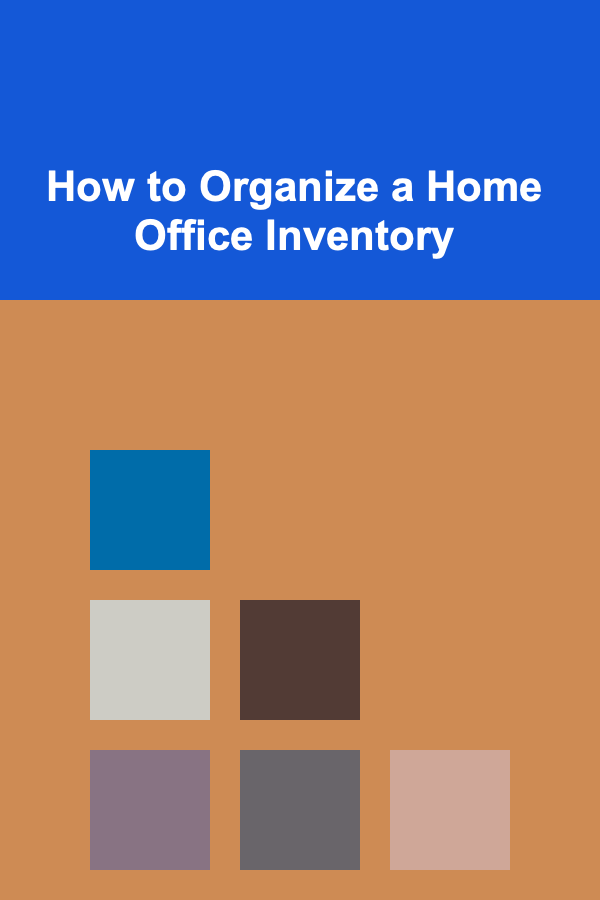Disability Insurance Expense Tracking for Freelancers and Self-Employed Individuals
ebook include PDF & Audio bundle (Micro Guide)
$12.99$6.99
Limited Time Offer! Order within the next:
Freelancers and self-employed individuals enjoy a level of freedom in their work life that many traditional employees envy. The flexibility to set their own hours, choose projects, and work from almost anywhere offers substantial personal and professional rewards. However, this freedom also comes with challenges, especially when it comes to managing personal finances and preparing for unexpected events like disability. One of the key challenges faced by self-employed people is securing disability insurance and effectively tracking the associated expenses. This article delves into the complexities of disability insurance expense tracking for freelancers and self-employed individuals and provides practical tips for managing these costs efficiently.
Understanding Disability Insurance for Freelancers
Disability insurance is an essential safety net for workers who are unable to perform their duties due to illness or injury. For traditional employees, disability insurance is often provided by the employer, typically as a benefit within a larger benefits package. However, for freelancers and self-employed individuals, disability insurance is something they must secure independently.
Types of Disability Insurance
There are two main types of disability insurance:
- Short-Term Disability Insurance (STD): This covers a portion of your income for a short period of time (typically up to 6 months) in case of a temporary illness or injury.
- Long-Term Disability Insurance (LTD): This provides a replacement income for a much longer period, ranging from several months to years, in the event of a severe or chronic condition that prevents you from working.
As a freelancer or self-employed individual, purchasing both short-term and long-term disability insurance is highly recommended to ensure that you are protected in both the short and long run.
Why Disability Insurance is Crucial for Freelancers
Freelancers and self-employed individuals are often their own bosses and, in many cases, their own safety nets. Without the protection that an employer might provide, freelancers are more vulnerable when it comes to health issues or injuries that could impair their ability to work.
Consider a situation where a freelance graphic designer, for example, suffers a back injury that makes it impossible for them to sit at a computer for long hours. Without disability insurance, this individual may be forced to forgo income until they recover, potentially leading to financial stress. Having disability insurance mitigates this risk by providing financial support during times of illness or injury.
The Importance of Tracking Disability Insurance Expenses
Tracking disability insurance expenses is an essential part of managing your finances as a freelancer or self-employed individual. Unlike employees who may have deductions taken directly from their paychecks, freelancers must manage their insurance premiums on their own.
Here's why it's essential to track these expenses:
1. Tax Deductions
For self-employed individuals, certain types of disability insurance premiums can be tax-deductible. The Internal Revenue Service (IRS) allows freelancers and independent contractors to deduct health insurance premiums, including disability insurance premiums, from their taxable income. However, to take advantage of these deductions, you must keep accurate records of all payments made for insurance premiums throughout the year.
2. Budgeting and Financial Planning
Disability insurance premiums can be expensive, especially for comprehensive coverage that includes both short-term and long-term benefits. By keeping track of these expenses, freelancers can factor them into their overall budget, ensuring they are setting aside enough money to cover premiums while maintaining profitability. Regular tracking also helps identify potential areas where costs could be reduced, such as finding more affordable policies or switching providers.
3. Emergency Preparedness
Disability insurance is about more than just budgeting---it's about preparing for the unexpected. By tracking your insurance expenses, you ensure that you're fully covered in case of an emergency. If you fail to track your payments, you might find yourself in a situation where your coverage lapses unexpectedly, leaving you vulnerable when a crisis strikes.
Methods for Tracking Disability Insurance Expenses
Freelancers and self-employed individuals need to implement systematic methods to track their disability insurance expenses accurately. Here are some strategies to help you stay organized:
1. Use Financial Software and Apps
Financial software tools such as QuickBooks, FreshBooks, or Xero can help you keep track of all your business expenses, including insurance premiums. These platforms allow you to categorize your expenses, generate reports, and even set up reminders for when payments are due. Many of these tools also integrate with your bank account, making it easy to track and manage your spending in real time.
Benefits of Financial Software:
- Automatic categorization of expenses
- Integration with your bank account and credit card
- Easy generation of tax reports
- Set reminders for upcoming payments
2. Set Up a Dedicated Expense Tracking System
For those who prefer a more hands-on approach, setting up a dedicated spreadsheet to track disability insurance premiums is a simple but effective method. You can create columns for the insurance provider, policy type (e.g., short-term or long-term), payment frequency (e.g., monthly, quarterly), premium amount, and payment date. This will help you see the full picture of your expenses at a glance.
Example of a Simple Spreadsheet Layout:
| Insurance Provider | Policy Type | Premium Amount | Payment Date | Payment Frequency | Notes | |--------------------|-------------|----------------|--------------|-------------------|-------| | ABC Insurance | Short-Term | $150 | 01/15/2025 | Monthly | | | XYZ Insurance | Long-Term | $200 | 01/15/2025 | Monthly | |
3. Keep Physical Records
If you prefer to keep physical records, you can maintain a file for all your disability insurance documents. Ensure that you keep invoices, policy statements, and payment receipts organized in a manner that allows you to easily reference them when needed. For example, use an accordion folder with labeled sections for each insurance provider.
4. Work with a Financial Advisor or Accountant
If managing finances and insurance expenses is overwhelming, consider hiring a financial advisor or accountant. These professionals can help you track all your business expenses and ensure you're getting the maximum benefit from any deductions, including disability insurance premiums. They can also assist with other areas of your business finances, such as retirement planning, tax strategy, and general budgeting.
Strategies for Reducing Disability Insurance Costs
While disability insurance is an important investment, it can be costly, especially for freelancers who don't have the advantage of group rates offered by employers. Here are some tips for reducing the cost of your disability insurance premiums:
1. Shop Around for Quotes
Insurance rates vary significantly between providers, so it's a good idea to get quotes from several companies before making a decision. Online comparison tools can help you evaluate different plans based on coverage options, premiums, and other factors.
2. Increase Your Deductible
Just like with health insurance, increasing your deductible can lower your monthly premium. This means you'll pay more out-of-pocket if you need to file a claim, but it can result in substantial savings on your premiums over time. However, be sure you can afford to cover the deductible in case of an emergency.
3. Bundle Insurance Policies
If you already have other forms of insurance, such as health or life insurance, check if your disability insurance provider offers discounts for bundling policies. Some insurers offer discounts for customers who have multiple policies with them.
4. Choose a Longer Waiting Period
A longer waiting period before your benefits kick in can reduce your premiums. For example, if you choose a 90-day waiting period for long-term disability insurance, your premiums will typically be lower than if you choose a 30-day waiting period. However, this means you'll need to have enough savings or alternative income to cover your expenses during the waiting period.
5. Review Your Coverage Regularly
As your career and financial situation evolve, so too should your disability insurance coverage. Regularly review your policies to ensure that your coverage is still appropriate for your current income and needs. You may find that you can reduce your coverage in some areas, leading to lower premiums.
Conclusion
For freelancers and self-employed individuals, disability insurance is a critical component of financial security, providing peace of mind in the event of illness or injury. However, tracking disability insurance expenses is just as important as securing the right coverage. By using financial software, creating a dedicated expense tracking system, or working with a financial advisor, freelancers can stay on top of their disability insurance premiums and ensure they're getting the best value for their money. Regularly reviewing and managing these expenses not only provides financial clarity but also helps you stay prepared for any unexpected setbacks that could interfere with your ability to work and earn. Ultimately, being proactive about tracking disability insurance costs ensures that you remain financially secure, even when the unexpected occurs.
Reading More From Our Other Websites
- [Small Business 101] How to Start a Small Business: From Idea to Execution in 2025
- [Beachcombing Tip 101] Beachcombing 101: A Beginner's Guide to Shoreline Treasure Hunting
- [Organization Tip 101] How to Store Die Cuts and Stencils for Easy Access
- [Personal Care Tips 101] How to Incorporate Personal Care for Men into Daily Routines
- [Organization Tip 101] How to Organize Your Recipe Collection for Easy Cooking
- [Home Staging 101] How to Stage Your Home to Appeal to Young Families
- [Home Staging 101] How to Stage a Yard: What Are the Best Practices for a Welcoming Outdoor Space?
- [Tie-Dyeing Tip 101] From Fabric to Art: Creative Shibori Patterns to Elevate Your Wardrobe
- [Organization Tip 101] How to Create a Labeling System for Craft Kits
- [Skydiving Tip 101] From Beginner to Pro: What to Look for in a Skydiving Jumpsuit at Every Skill Level

Analyzing Customer Data: Techniques and Best Practices for a Customer Insights Analyst
Read More
How to Care for Your Pet During Different Life Stages
Read More
How to Make a Checklist for Staying Motivated During Your Job Search
Read More
How to Organize a Home Office Inventory
Read More
The E-commerce Manager's Playbook: Optimizing Platforms for Maximum Conversion
Read More
How to Build a Mindful To-Do List with Meditation
Read MoreOther Products

Analyzing Customer Data: Techniques and Best Practices for a Customer Insights Analyst
Read More
How to Care for Your Pet During Different Life Stages
Read More
How to Make a Checklist for Staying Motivated During Your Job Search
Read More
How to Organize a Home Office Inventory
Read More
The E-commerce Manager's Playbook: Optimizing Platforms for Maximum Conversion
Read More